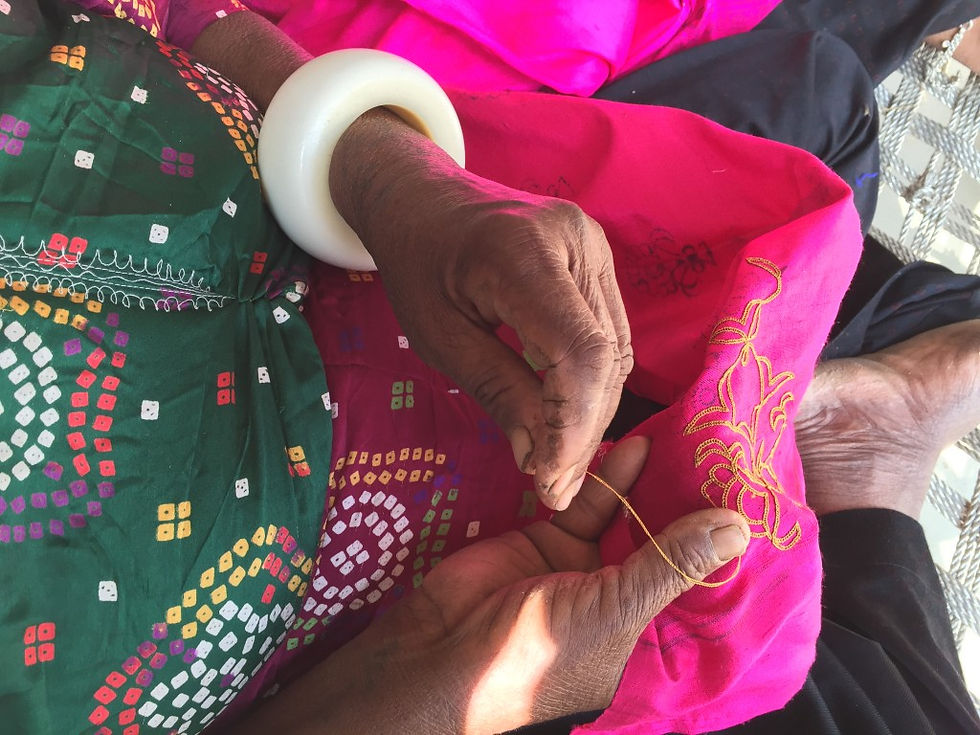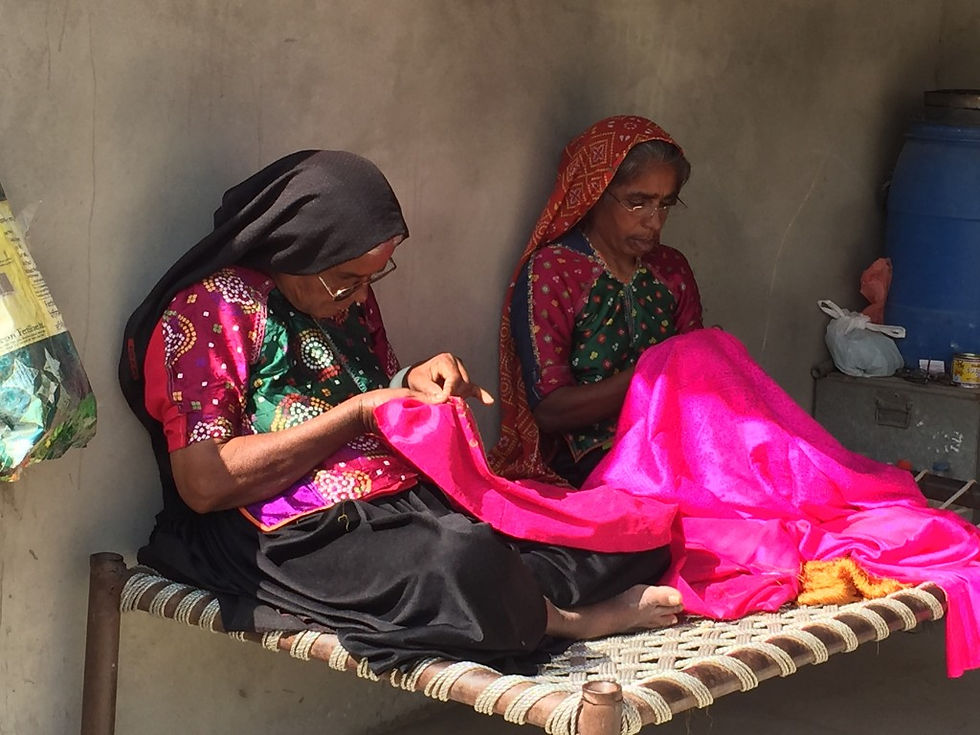
Su’s wallet a little lighter, we headed back to the city with the prized toran. Or so we thought. The purchase had been left behind. Good-natured teasing of Su’s memory followed, and we backtracked to the village to reclaim the toran.
And then, of course, the bus broke down.
The group trooped to a roadside cafe. Soon we were sipping sweet spicy chai under Coca-Cola umbrellas while a procession of serious-faced men buckled their foreheads in the universal choreography of human confrontation with temperamental technology. It looked like we were in for a long wait until our guide, Niravbhai, persuaded Su to relinquish her toran so he could “interpret” the embroidery for us.

Embroidery tells two stories. One is a broad cultural story where the manner in which tribal community members dress gives clues to their marital status, age, and economic status.The other story is in the microcosmic reading of each stitch, colour, and shape within a swirling tapestry. Ahir embroidery, explained Niravbhai, could be read like a book. Each painstaking stitch carried clues to the personality, work ethic, and lifestyle of the woman who had created it.
Traditionally, embroidery was thought to be the only reliable way to judge a woman’s character. The quality of stitching held clues to the embroiderer's personality. Was she patient, consistent, focused? Or did she get easily distracted, impatient, even bored? In this case, the slant indicates impatience, as opposed to a more even or upright row of stitching.

Here, the row of stitches begins dense and meticulous, then coalesces as the artist began to work in a hurry, or perhaps lost patience with the work.

Tribal women were known to intentionally make mistakes in their embroidery. They believed that only God’s creation is perfect, and creating a perfect piece invited divine punishment.
Inspiration for symbols and colours come from forces that shape the Ahir lifestyle. Traditionally, the Ahir are cowherds. Pastoral and religious motifs such as cows, parrots, Krishna, leaves, and flowers tend to dominate. Certain tribal groups, depending on sources of food and livelihood, incorporate different imagery into their needlework.

Ahir embroidery is a fascinating lexicon of symbols, and throughout hundreds of villages the embroidery has differentiated into distinct styles. Embroidery is a cultural language that has been passed down, mother-to-daughter, for centuries. Like any language, long-term sustainability of Ahir embroidery is threatened by younger generations leaving for the cities. But thanks to efforts of non-profits like Shrujan Ahir embroidery has found a place in the global arena for its beauty and fingerprint-uniqueness.
In unravelling an embroider's story, we peek at some of what connects humanity: universal longing, weariness, and hope. An embroidery story unites us by bridging the gap between east and west, rural and urban, world travellers and village artisans. The common language is of tradition, beauty and detail.

Read about the Legend of Dhuna Makwani, Ahir woman extraordinaire
